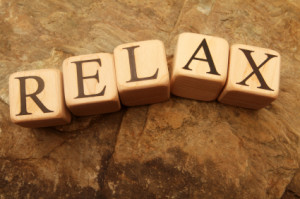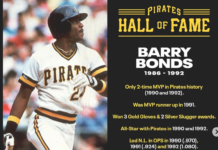
Stress
Stress is a serious business. The subject is often in the news: we know that it causes the loss of more working days than physical illness and can lead to serious conditions of the heart and other organs. Stress is taken so seriously these days that employers have a legal duty of care towards their employees.
The media put far less emphasis on the natural antidote to stress: relaxation. It might be useful to remind ourselves what relaxation actually means. Far from merely being the absence of tension, relaxing actually requires a positive act of will. Just as a composer writes rests – indicating silence – as carefully as the notes played by musicians, so we need to decide when to relax and how to do so. Just think of the expression ‘To compose yourself’.
Techniques that help
We know of many techniques and disciplines, some of them very ancient, that help us to relax. Meditation has been described as ‘Increasing the distance between thoughts’, a way of emptying the mind of its usual chatter, regret, worry and aspiration. Yoga can help us to achieve a similar inner calm through focusing on the body and how it breathes. In both cases, the emphasis is actively on focusing our attention on the here and now, rather than reflecting on the past or thinking ahead.
As with any other conscious decision, we need to focus on what we are doing if we want to succeed – and here, for many of us, lies the difficulty. If we want to benefit from these disciplines, not only do we need to endure the slow process of learning new techniques that feel strange and unfamiliar before enjoying the benefits, we also have to overcome an instinctive objection from our own bodies.
What tension does
The trouble is that when we are experiencing stress we become tense: our muscles tighten and adrenaline and cortisol flow through our systems, making it even harder to relax. Even sitting in a quiet darkened room doesn’t guarantee success – if your mind is buzzing you’ll feel over stimulated. It’s easy to understand why we seek easier, more instant ways to calm down. That’s why we sometimes confuse relaxation with distraction – especially in a time when so many distractions are available.
What does or doesn’t relax us
‘I feel stressed out tonight. Let’s just relax in front of the TV.’ Unfortunately, most television programmes are designed to engage us by arousing our interest in some way. The sound tracks are especially effective in stimulating us emotionally, so that the net result of our attempts to ‘switch off’ turn out to be merely ‘changing channels’ with our attention. We swap one set of stimuli for another – and we have even less control over the content than when we are wrestling with all the details of our own over-busy lives.
The active choice
So: relaxation is an active choice, but it can seem too difficult and time-consuming to learn how to use the techniques that work. How can we actively choose to relax easily and effectively? William Congreve wrote ‘Music hath charms to soothe the savage breast, to soften rocks, or bend a knotted oak.’ and throughout history gentle music has been a favourite way to change the way we feel. This is because the vibrations that reach our ears do more than just please us as they cause our own internal rhythms, like heartbeat and brain activity, to synchronise with the music.
If you have ever tried turning off the sound track of a scary movie you know how flat it can seem with only pictures to keep the mood going. Anyone who has seen what happens to baby boomers at a party when someone plays a Rolling Stones record has experienced the power of music to move people.
Type of music that relaxes
Naturally, the result depends on the type of music being played. A growing number of composers are choosing to focus mainly on the effect their music has on the listener. In the 1960s a series of ‘mood music’ albums appeared, followed in the 1970s by British artist Brian Eno’s invention of the term ‘ambient music’ to describe the subtle, mood-invoking albums he created. The emphasis in this type of music is on the listener, not the artist ~ a very different approach from most productions. My own experience is relevant here as I spent more than twenty five years doing my best to capture the audience’s attention as a session musician, performer and bandleader before getting involved with hypnosis and Neuro-Linguistic Programming as a way of helping people to live the kind of lives they really want.
New role
It was while exploring how to combine music with these ways of helping people that I realised the difference in emphasis: in my new musical role I was no longer centre stage ~ in fact, if the listener was aware of me then I wasn’t doing my job. It surprised me how much more difficult it can be to produce music so subtle that the listener is largely unaware of it, yet so effective that it relaxes him or her every time.
Self treatment
As I researched what had already been done I found a fascinating range of different techniques, all contributing to the power of gentle music to soothe and calm us. These approaches can be combined to create truly effective musical solutions to the everyday problems caused by stress. This kind of self-treatment is a welcome alternative to pharmaceuticals, being very effective and extremely safe. Some hospitals have found that when they play the right kind of music their pain-killing medication bill goes down, in some cases to half its former level.
In the 1960s, a popular idea was that music could change the world. For us as individuals, that now seems to be true – at least on a personal level.
| About The Author
Graham Smith is a musician, writer, coach and therapist. His composition Calmtime is a relaxation CD for mother and baby, available at www.calmtime.com. |



































